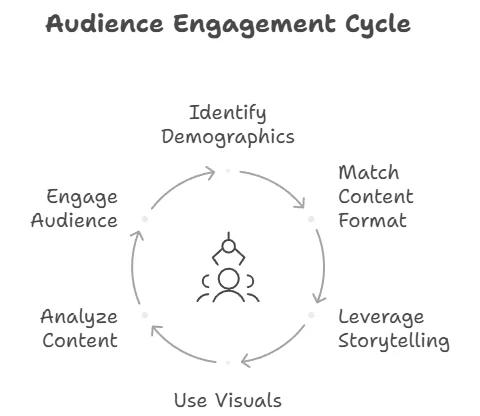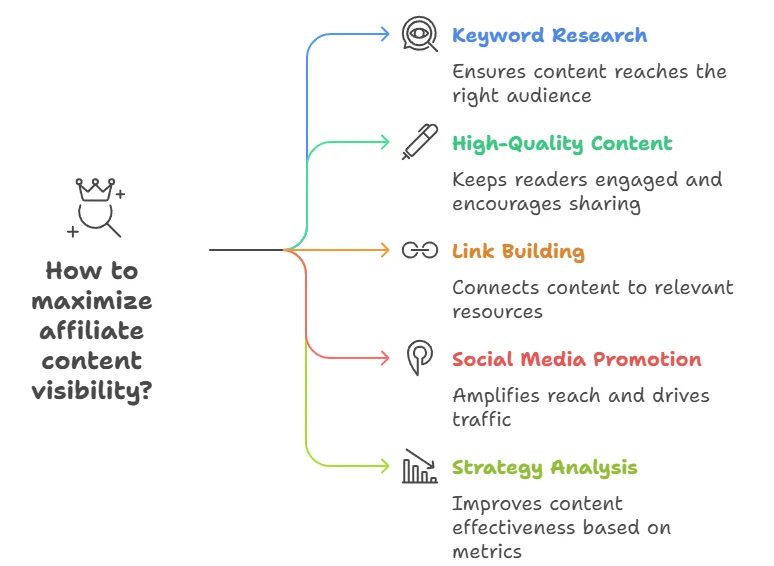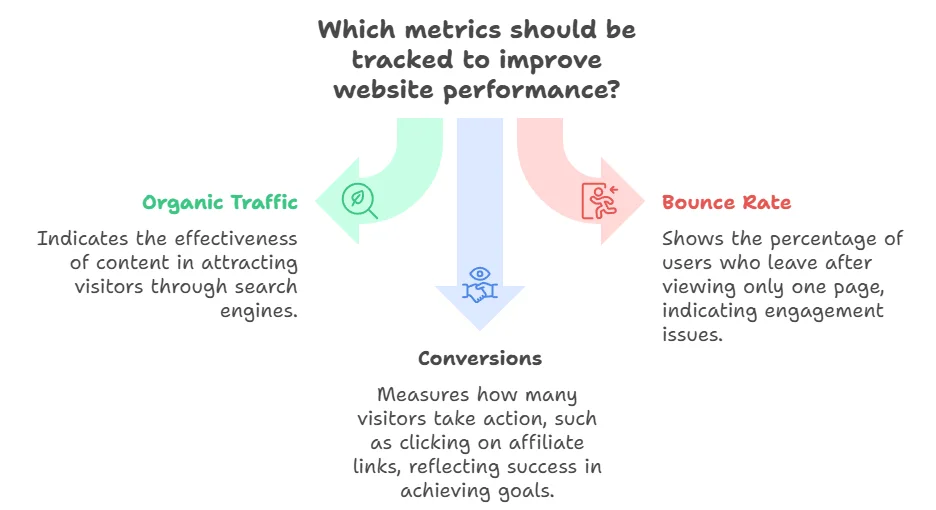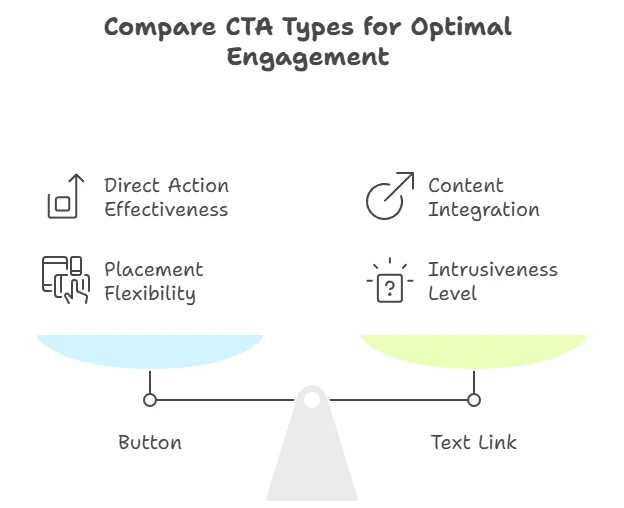
Know Your Audience
Before you start writing, it’s crucial to know who your audience is. Understanding their preferences, interests, and pain points helps you craft relevant content that captures attention. Here are some effective ways to learn about your audience:
- Conduct surveys to gather feedback.
- Engage with your audience on social media.
- Analyze the comments and queries on your existing content.
Create Valuable Content
Your primary goal should always be to provide value. People are more likely to engage with content that solves their problems or provides useful information. Here’s how you can ensure your content is valuable:
- Research topics extensively.
- Include statistics and case studies to back up your claims.
- Offer actionable tips that your readers can utilize.
Utilize SEO Best Practices
Search engine optimization (SEO) plays a vital role in the visibility of your content. To optimize your affiliate content effectively:
- Use relevant keywords throughout the content, but avoid keyword stuffing.
- Make sure to include both short-tail and long-tail keywords.
- Optimize image alt texts and meta descriptions.
Write Compelling Headlines
Your headlines are the first thing people notice. A compelling headline can make or break your article’s engagement. To craft engaging headlines:
- Use numbers and lists when possible (e.g., “5 Tips…”).
- Pose questions to intrigue the reader (e.g., “Want to Boost Your Sales?”).
- Keep it concise and clear, ideally under 70 characters.
Incorporate Visual Elements
Adding images, infographics, or videos can significantly boost engagement. Visual elements not only make the content more appealing but can also help in explaining complex ideas simply. Consider these pointers:
- Use high-quality images relevant to your topic.
- Create infographics to summarize key data effectively.
- Incorporate videos for demonstrative purposes.
Include Clear Calls to Action (CTAs)
Every piece of content you create should guide your reader towards a specific action. Whether it’s clicking a link, signing up for a newsletter, or making a purchase, clear CTAs direct your reader’s next steps. Here are some suggestions:
- Be direct in your language (e.g., “Click here to learn more”).
- Position your CTAs prominently within your content.
- Use action-oriented verbs to encourage engagement.
Test and Optimize Your Content
After publishing your content, analyzing its performance is essential. Use analytics tools to assess engagement levels. Based on your findings, you can:
- Adjust headlines or CTAs that aren’t performing well.
- Update content based on audience feedback.
- Experiment with different formats and styles.
Stay Updated with Industry Trends
The digital marketing landscape changes rapidly. Staying updated with the latest trends helps you tailor your content effectively. Regularly check credible sources such as:
- Neil Patel for trends in content marketing and SEO.
- WordStream for practical tips related to PPC and content marketing.
- Moz for insights on SEO best practices.
By applying these effective Affiliate Content Writing Tips, you can create engaging content that resonates with your audience, increases traffic, and boosts conversions. Remember, the main goal is to create value while also driving your affiliate objectives. Following these strategies will guide you on the path to successful affiliate marketing.
Understanding Your Audience: The Key to Successful Affiliate Writing

To excel in affiliate writing, understanding your audience is crucial. This comprehension allows you to create content that resonates with your readers, leading to better engagement and higher conversion rates. The more you know about what your audience desires, the better you can tailor your affiliate content to meet their needs.
Identifying Demographics and Pain Points
Start by identifying the demographics of your target audience. Consider factors such as age, gender, location, interests, and spending habits. You can gather this valuable information through a variety of methods:
- Utilizing social media analytics tools to learn about your followers.
- Conducting surveys or polls to gather direct feedback.
- Engaging with your audience through comments and messages to understand their concerns and questions.
Understanding your audience’s pain points is essential. What challenges are they facing? What problems do they need solutions for? By answering these questions, you can create affiliate content that addresses their specific issues. This not only builds trust with your readers but also positions you as an authority in your niche.
Matching Content Format to Preferences
Next, consider the interests and preferences of your audience. Are they looking for product reviews, how-to guides, or comparisons between products? Your content format should match their preferences to keep them engaged. Popular content formats include:
- In-depth product reviews that highlight pros and cons.
- Comparison charts to help users make informed decisions.
- Listicles that simplify choices for busy readers.
Once you identify the content type your audience prefers, you can optimize it for better visibility in search engines. Incorporate relevant keywords naturally throughout your writing. However, avoid keyword stuffing, as this can detract from the reader’s experience. Instead, focus on writing naturally while ensuring that the keywords fit seamlessly into the flow of your content.
Leveraging Storytelling and Emotion
Another important aspect is to evoke emotion in your writing. Use storytelling techniques to connect with your readers on a deeper level. Illustrating real-life scenarios can make your affiliate products more relatable and appealing. When your audience can see themselves using a product, they are more likely to click on your affiliate links.
Here are some tips for effective storytelling in your affiliate content:
- Share personal experiences with the products.
- Include testimonials and reviews from satisfied customers.
- Use relatable language that resonates with your audience.
Clear communication is key. Write in a friendly, approachable tone while maintaining professionalism. Avoid jargon that may confuse your readers. Simple language helps in keeping your content accessible and engaging.
Visuals and Ongoing Analysis
Visuals can significantly enhance your affiliate content. Use high-quality images, infographics, and videos to supplement your text. These elements can illustrate your points more effectively and are likely to capture and retain attention. Furthermore, ensure that all visuals are relevant and align with your content’s message.
Analyzing Your Content
Regularly analyzing your content’s performance is crucial for ongoing success. Use tools like Google Analytics to track metrics such as page views, click-through rates, and conversion rates. Understanding these numbers can help you refine your strategies and create more audience-centric content in the future.
Engaging with Your Audience
Engaging with your audience beyond your website is another powerful strategy. Use social media platforms to share your affiliate content and interact with users. Participate actively in discussions related to your niche, as this can broaden your exposure and establish your authority. Explore resources from websites like Affilorama for additional insights into effective social media engagement.
An Evolving Field
It’s important to keep in mind that affiliate writing is an evolving field. Trends change, and so do audience preferences. By continuously educating yourself and adjusting your strategies, you will maintain the effectiveness of your affiliate writing. Also, consider joining affiliate marketing forums and communities to stay updated on the latest techniques and strategies. Websites like Impact can offer valuable insights into new trends in affiliate marketing.
Understanding Your Audience
Understanding your audience is the bedrock of successful affiliate writing. By recognizing their demographics, pain points, preferences, and interests, you can create engaging and tailored content that resonates with them. This approach not only builds trust but ultimately leads to higher conversion rates, making it a win-win situation for both you and your audience.
Crafting Compelling Calls-to-Action in Affiliate Content
When it comes to Affiliate Content Writing Tips, crafting a compelling call-to-action (CTA) can significantly influence your conversion rates. Whether you’re promoting a product or guiding users to click a link, an effective CTA encourages your audience to take the next step. Let’s explore some key strategies to make your CTAs more compelling and effective.
Resonance and Placement
The first step in creating an impactful CTA is to ensure it resonates with your audience. Understand who your readers are and what they desire. Your CTA should meet their needs and speak directly to them. Utilize active language and engage the reader with phrases like “Join now,” “Get your free trial,” or “Discover the benefits today.” These phrases invoke a sense of urgency and excitement.
Next, consider the placement of your CTA within your content. Strategic positioning can make a large difference in your conversion rates. Here are some optimal placements to consider:
- At the end of your article, offering the next logical step.
- Within the content, where relevant information leads naturally into your CTA.
- Even as a pop-up or sidebar that catches attention without being intrusive.
Clarity, Exclusivity, and Design
Another essential element of crafting an effective CTA is clarity. Make sure the action you want readers to take is clear. Avoid vague language and instead use concise, straightforward terms. Instead of saying, “Click here,” specify the action: “Download your free ebook now.” This clarity removes any ambiguity and guides your reader directly to where they should go next.
To further enhance the effectiveness of your CTAs, consider employing the principle of exclusivity. Phrases like “Limited time offer,” or “Exclusive deal for our readers” create a sense of urgency and encourage immediate action. You want your audience to feel as though they might miss out if they don’t act promptly.
Visual elements also play a crucial role in making your CTA stand out. Use contrasting colors, bold fonts, or buttons that draw the eye. A CTA button should be easily identifiable and distinct from other text on the page. Don’t underestimate the power of design in driving conversions.
| CTA Type | Usage | Effectiveness |
|---|---|---|
| Button | Often used for direct actions like downloads | High |
| Text link | Embedded within the content | Medium |
| Pop-up | Appears on webpage entry or exit | High (if not intrusive) |
| Banner | Placed at the top or bottom of the webpage | Medium to High |
Testing and Storytelling
Testing your CTAs is also a vital practice. A/B testing allows you to compare different versions of your call to action to determine which performs better. Test variations in wording, colors, and placement until you find a combination that works best for your audience. Utilize tools like Optimizely or VWO for building personalized experiences and measuring your success.
Additionally, consider the benefits of storytelling within your affiliate content. When you share testimonials, personal experiences, or success stories, it builds trust and piques interest. After reading a compelling narrative, your audience is more likely to respond positively to your CTA, feeling a connection to the outcomes shared.
Always keep an eye on your analytics to gauge the impact of your CTAs. Tools like Google Analytics can provide insights on user behavior and conversion paths. Adjust your strategy based on this data, continuing to refine your approach to achieve better results.
By following these Affiliate Content Writing Tips for crafting compelling calls-to-action, you will not only enhance reader engagement but can also significantly boost your conversion rates. Implementing a thoughtful strategy with clear, direct language will guide your readers effectively and encourage them to take action.
SEO Strategies for Maximizing Affiliate Content Visibility

If you’re diving into affiliate marketing, you’ve likely realized how essential SEO is for your success. The visibility of your affiliate content depends heavily on how well you implement SEO strategies. Here are some effective strategies you can use to maximize your affiliate content’s visibility.
Keyword Research and Optimization
Begin by identifying relevant keywords that your target audience is searching for. Use tools like Ubersuggest or Keyword Tool to find popular search terms in your niche. Aim for a mix of short-tail and long-tail keywords to attract a wider audience while maintaining relevance.
Once you have your keywords, strategically place them throughout your content. It’s important to include them in the following areas:
- Title Tag
- Meta Descriptions
- Header Tags
- Image Alt Text
- Throughout the Content
However, avoid keyword stuffing. Aim for a natural flow in your writing. Use synonyms and related phrases to improve context while keeping the content enjoyable for readers.
Creating High-Quality, Engaging Content
Your reader’s experience is crucial. High-quality content that provides value not only retains your audience but also encourages sharing. Here are some Affiliate Content Writing Tips to consider:
- Write in an engaging style that speaks directly to your audience.
- Use clear and concise language, avoiding jargon.
- Incorporate visuals like images and videos to break up text and enhance engagement.
- Answer common questions your audience may have; this can also improve your visibility in featured snippets.
Build Internal and External Links
Linking is an essential component of SEO. Internal links help search engines understand the structure of your website. They also keep users engaged by directing them to related content. Aim to:
- Link to your previous relevant articles.
- Use descriptive anchor text that lets the reader know what to expect.
External links are just as vital. By linking to authoritative sources, you boost the credibility of your content. Make sure these links are relevant and lend value. Websites like Backlinko offer insights that can help improve your linking strategy.
Promote Content on Social Media
Social media is powerful for driving traffic to your affiliate content. Share your articles on platforms where your audience is active. Here are a few strategies for effective promotion:
- Use eye-catching visuals and snippets from your content.
- Engage with followers by asking questions or creating polls related to your content.
- Join groups or communities that resonate with your niche and share your content there, ensuring you are adding value.
Analyze and Adjust
Monitoring your performance is key. Use tools like Google Analytics and SEMrush to track metrics like traffic, bounce rates, and conversions. Identify which pages perform well and which ones need improvement. Regularly updating your content based on analytics can keep your affiliate links relevant and effective.
| Metrics to Track | What They Indicate |
|---|---|
| Organic Traffic | How well your content attracts visitors through search engines |
| Bounce Rate | Percentage of users who leave after viewing only one page |
| Conversions | How many visitors take action, like clicking on affiliate links |

By implementing these SEO strategies effectively, you can enhance your affiliate content’s visibility significantly. Focus on providing valuable information for your readers, and your affiliate marketing efforts are likely to thrive.
Analyzing Successful Affiliate Marketing Case Studies for Insights
Successful affiliate marketing is a captivating field that allows individuals to earn a commission while promoting products or services. By analyzing case studies of successful affiliate marketers, we can glean actionable insights and strategies that pave the way for earning potential. The following analysis shares specific cases, highlights effective strategies, and reveals lessons that can be applied to your own affiliate marketing endeavors.
Case Study 1: Pat Flynn of Smart Passive Income
Pat Flynn is one of the most notable figures in affiliate marketing. He used his blog, Smart Passive Income, to showcase various online business strategies and earn a passive income. His transparent approach set him apart. Here are key takeaways from his success:
- Authenticity: Pat shares his real income reports, which helps build trust with his audience.
- Valuable Content: He offers in-depth content about his experiences, keeping readers informed and engaged.
- Diverse Affiliate Products: He promotes a mix of products across different niches.
Case Study 2: Michelle Schroeder-Gardner of Making Sense of Cents
Michelle Schroeder-Gardner created a finance-focused blog that has become a go-to resource for money management and budgeting. Her primary source of revenue comes from affiliate marketing. Here’s what her case reveals:
- Niche Focus: Selecting a specific niche allows for targeted marketing, making it easier to reach potential customers.
- Email Marketing: Michelle effectively uses an email list for direct promotions, which leads to higher conversion rates.
- Product Reviews: Providing honest reviews adds credibility and encourages readers to purchase through her affiliate links.
Case Study 3: Ryan Robinson of ryrob.com
Ryan Robinson is a blogger and content marketer who has built a successful platform by providing valuable resources for aspiring entrepreneurs. His strategies include:
- High-Quality Blog Posts: He invests in creating comprehensive guides that offer genuine value.
- SEO Techniques: Ryan employs effective SEO strategies, optimizing for long-tail keywords to attract organic traffic.
- Strategic Partnerships: Collaborating with brands helps boost his visibility and credibility.
Common Strategies in Successful Affiliate Case Studies
By examining these case studies, several common strategies come to light:
- Build Trust: Transparency is crucial. By sharing personal stories and income reports, you establish trust with your audience.
- Focus on Engagement: Create content that engages readers. Using videos, infographics, and downloadable resources can enrich the user experience.
- Leverage Email Marketing: Direct communication with your audience boosts conversion rates. Build an email list and send regular updates.
- Utilize Social Media: Promote your content across various social platforms to expand your reach and attract new audiences.
| Case Study | Primary Strategy | Key Insight |
|---|---|---|
| Pat Flynn | Authenticity in sharing reporting | Building trust leads to loyal followers |
| Michelle Schroeder-Gardner | Focused niche and email marketing | Targeting a specific audience improves sales |
| Ryan Robinson | High-quality content with SEO | Quality attracts more organic traffic |
These insights into your affiliate marketing strategy may significantly enhance your chances for success. However, success doesn’t come overnight. Continuous learning and adaptation are essential. Explore additional resources to deepen your understanding of affiliate marketing. Some valuable websites include Smart Passive Income, Making Sense of Cents, and Ryan Robinson’s Blog.
As you embark on your affiliate marketing journey, remember that the road may be long, but with the right strategies in place, success is just around the corner.
Conclusion
By implementing effective Affiliate Content Writing Tips, you lay the foundation for building a loyal audience and driving conversions. Understanding your audience is paramount; when you know their preferences and challenges, you can tailor your content to resonate with their needs. Engaging your readers through relatable storytelling and practical solutions not only keeps them interested but also positions you as a trusted resource.
Crafting compelling calls-to-action is essential for guiding your audience smoothly toward the next steps. Whether it’s signing up for a newsletter or making a purchase, clear and motivating CTAs encourage action and ultimately boost your affiliate revenue.
SEO strategies enhances your content’s visibility, making it easier for potential buyers to find your offerings. Focus on optimizing keywords, using meta tags, and ensuring your content aligns with what users are searching for. The right SEO approach combined with engaging content can significantly improve your rankings on search engines.
Moreover, analyzing successful affiliate marketing case studies allows you to glean insights and replicate their successes. Look at what top performers are doing right, from their content style to their promotional strategies, and adapt these learnings to fit your unique voice and audience.
As you continue honing your affiliate writing skills, remember that the ultimate aim is to inform, engage, and help your readers. Balancing valuable content with strategic marketing techniques will not only enhance your Affiliate Content Writing Tips but also lead to sustainable success in driving conversions. Embrace these strategies, and watch your affiliate marketing efforts flourish.
